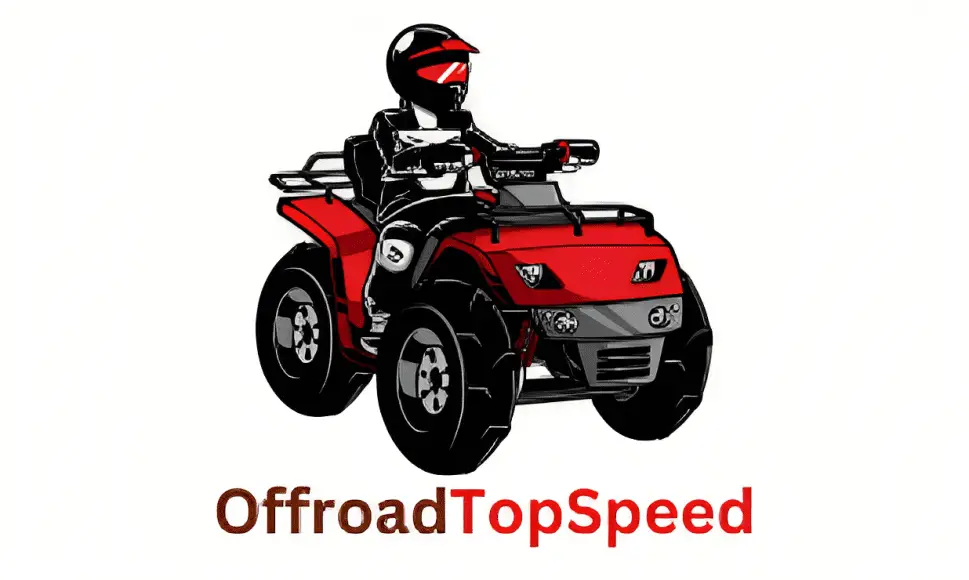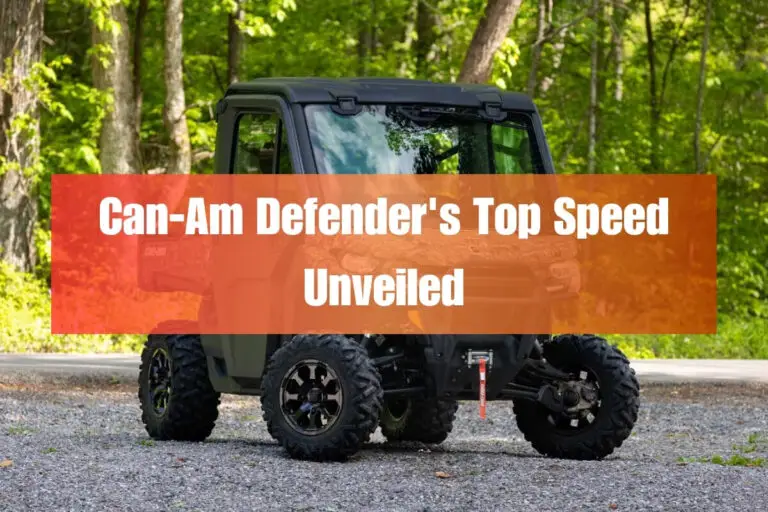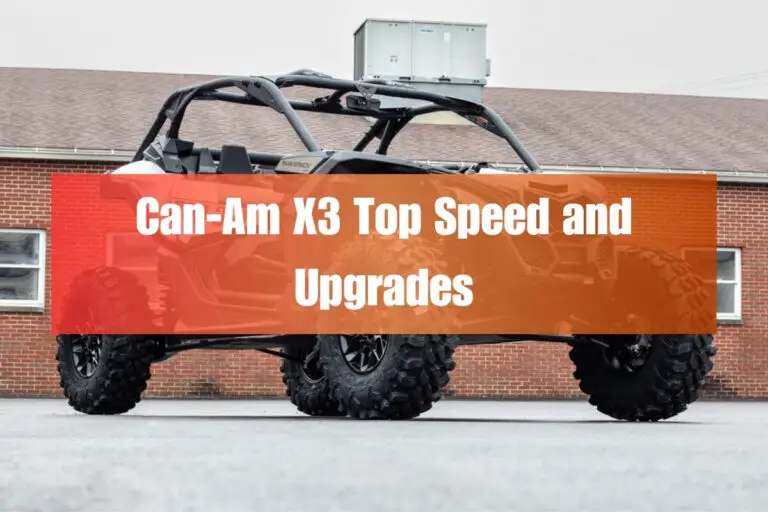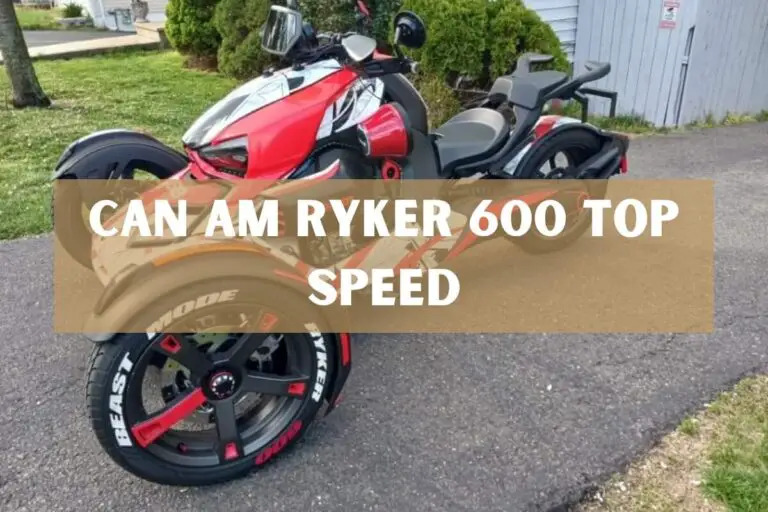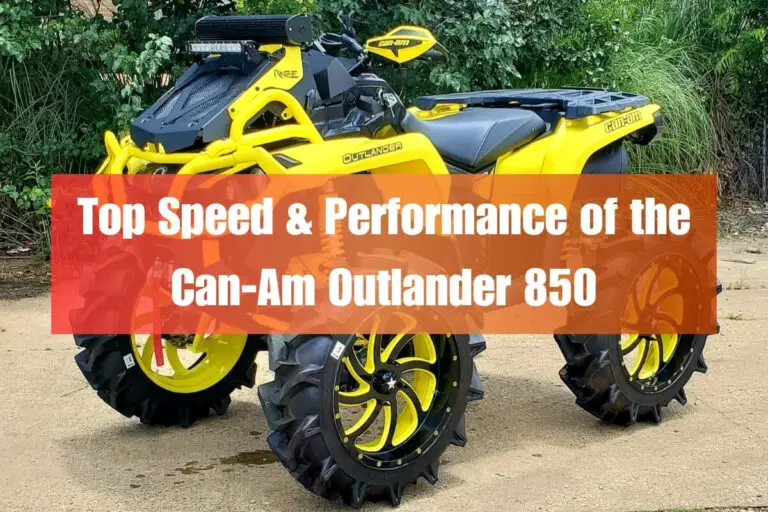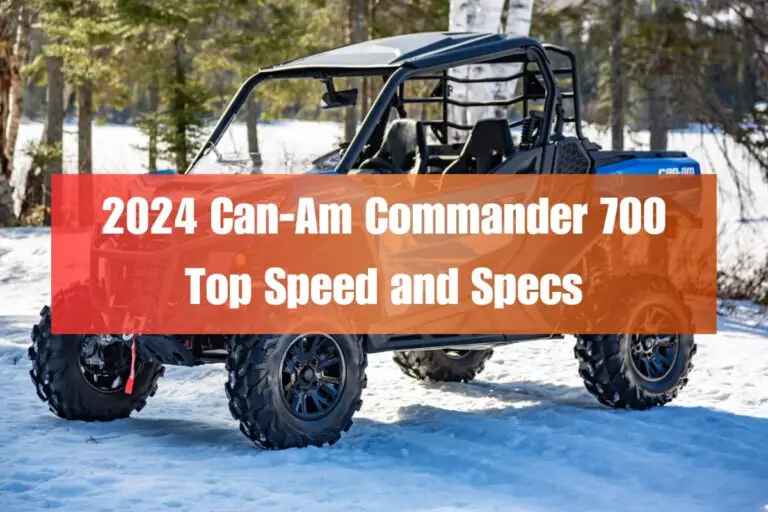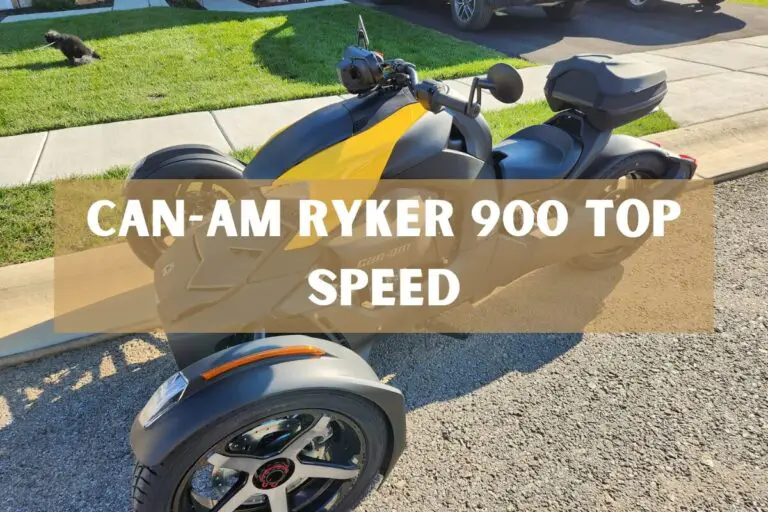Can-Am Spyder Top Speed: How Fast These 3-Wheel Bikes Actually Go?
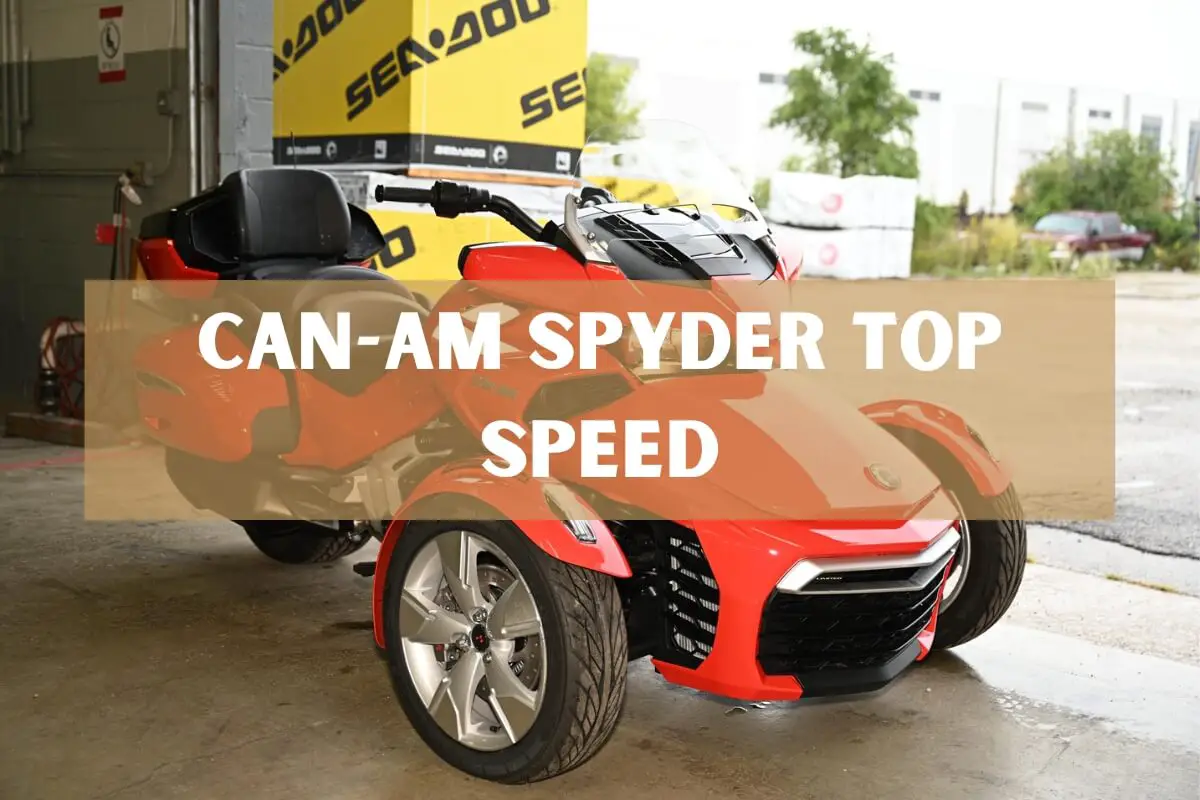
The Can-Am Spyder is an intriguing vehicle that blurs the lines between motorcycle and car. With its eye-catching, futuristic design and three-wheel configuration, this “roadster” turns heads wherever it goes.
But many riders want to know: what’s the top speed of the Can-Am Spyder? Can it actually hit 125mph like a real motorcycle? The short answer is yes, with the right model and conditions, the Can-Am Spyder can reach top speeds of 125 mph.
In this detailed guide, we’ll dive into the Can-Am Spyder’s power, acceleration capabilities, and real-world top velocity of 125mph across different models. You’ll learn about the Spyder’s powerful Rotax engines, performance factors, and how it compares to two-wheeled motorcycles for speed enthusiasts.
Here’s what we’ll cover:
- Overview of Can-Am Spyder models, specs, and engines
- Top speeds for the F3, RT, and Ryker trim levels
- How horsepower, RPMs, weight, and mods impact velocity
- What it feels like to ride at 100+ mph
- Handling and stability at high speeds
- Performance vs. motorcycles and speed limits
- Do you need a motorcycle license?
Let’s start by getting to know this unique 3-wheel cruiser.
An Introduction to the Can-Am Spyder Roadster
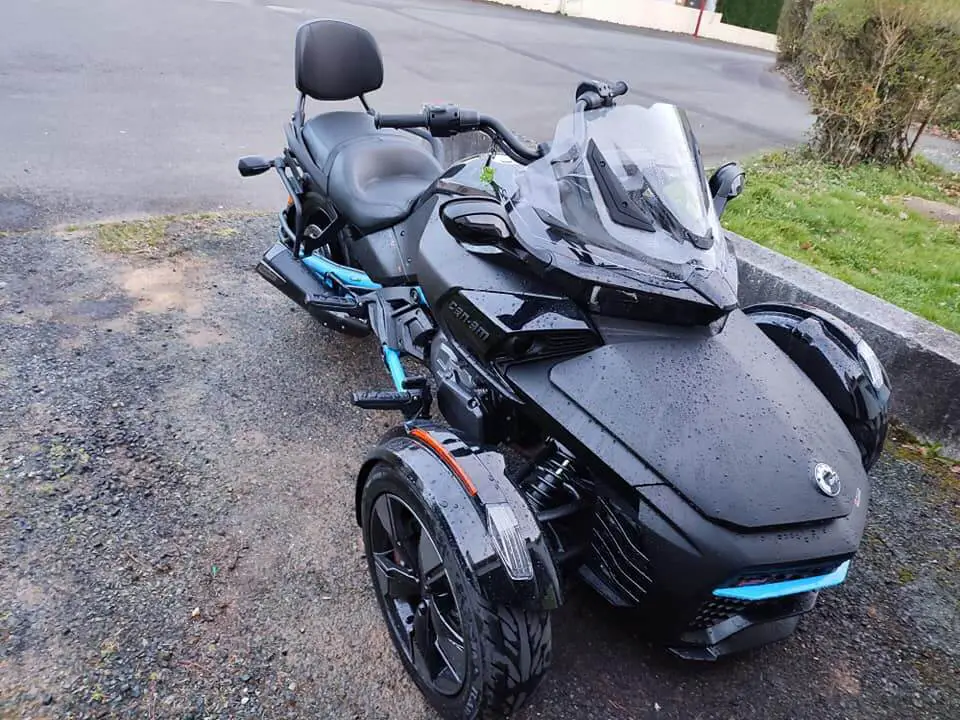
The Can-Am Spyder is a “roadster” style motorcycle made by BRP, a Canadian company known for vehicles like Ski-Doo snowmobiles and Sea-Doo personal watercraft.
BRP launched the first Spyder model in 2007. This three-wheel vehicle was meant to capture the feel of an open-air motorcycle but with added stability.
Over the years, Can-Am has continued innovating and releasing new Spyder variants like the F3, RT, and Ryker. They all use a distinctive Y-frame chassis with two front wheels and a single rear drive wheel.
Customers praise the Spyder for its chopper-style cruiser look, comfort, and ease of handling. At low speeds, it feels closer to a car than a traditional two-wheel bike. But many riders are still curious just how fast this open-air roadster can truly go when you hammer the throttle.
Let’s breakdown how each model compares.
Can-Am Spyder Model Specs Overview
| Model | Engine | Horsepower | Torque | Transmission | Dry Weight |
|---|---|---|---|---|---|
| F3 Limited | 1330cc Rotax in-line 3 cylinders liquid-cooled | 115 hp | 96 ft-lb | 6-speed manual or semi-automatic | 988 lb |
| RT Limited | 1330cc Rotax in-line 3 cylinders liquid-cooled | 115 hp | 96 ft-lb | 6-speed manual or semi-automatic | 1,021 lb |
| Ryker Rally | 900cc Rotax in-line 3 cylinders liquid-cooled | 82 hp | 58 ft-lb | CVT Automatic | 627 lb |
Can You Break 125 MPH On a Can-Am Spyder?
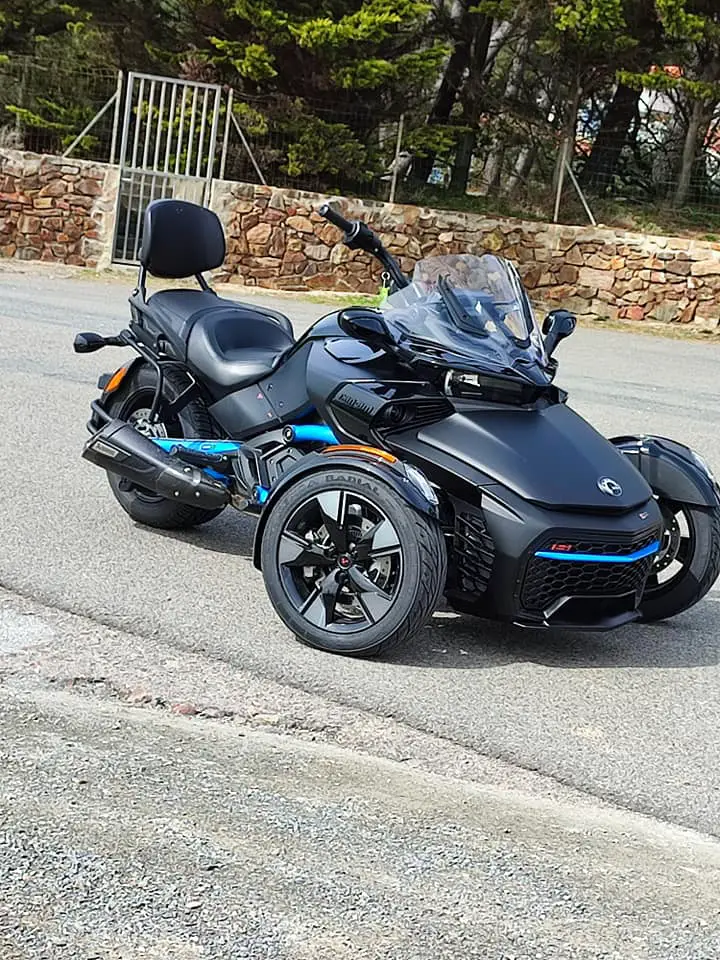
So what kind of acceleration and velocity can you expect from Can-Am’s sport touring bikes?
The short answer: yes, some Can-Am Spyder models can definitely exceed 125 mph!
But the top speeds vary notably across the different trim levels based on horsepower, engine size, gearing, weight, aerodynamics and other factors. Riders may also choose speed limiters on certain models.
Let’s compare the capabilities of Can-Am’s highest performance options:
Can-Am Spyder F3 Limited Top Speed
With its muscular 1330cc Rotax in-line 3 cylinders liquid-cooled engine pumping out 115 horsepower, the manual-shift Spyder F3 Limited can reach a blistering top speed of 127 mph (204 km/h) based on Can-Am’s estimates.
Owners report hitting speeds over 125 mph in real-world riding:
“I’ve had mine up to 125+ mph before the limiter kicked in. There’s definitely enough power to go faster.”
So on an open straightaway, you could potentially exceed 120+ mph by removing the F3’s limiter!
Can-Am Spyder RT Limited Top Speed
The Spyder RT touring model has the same powerful propulsion as the F3 – a 1330cc 115 hp Rotax engine. So even with its heavier weight and bags, it can still hit exhilarating triple-digit velocities.
Can-Am lists the RT Limited’s top speed as 70 mph (112 km/h). Owners have logged top speeds over 70 mph sprinting down highways. While not as fast as the lighter F3, the RT still provides a thrilling ride:
“My RT Limited will reach 40 mph in 3.8 seconds. With the windshield up, hard cases, passenger, etc I’ve gotten it up to 70 mph.”
Can-Am Ryker Rally Top Speed
As Can-Am’s smallest, most accessible 3-wheel option, the Ryker Rally uses a snappy 900cc Rotax triple producing 82 hp.
The peppy Ryker can achieve an electronically limited top speed of 102 mph (164 km/h). Since it’s designed for recreation, the Ryker focuses more on low-end power and nimble handling than chasing extreme velocities.
So while the Ryker won’t break any land speed records, riders report its quick acceleration makes it feel faster than its top speed suggests. Plus it handles impressively in the twisties.
Across the Spyder line-up, the manual-shift F3 Limited remains the fastest trim level. But even “entry level” Rykers deliver a fun adrenaline rush.
Can-Am Spyder Model Top Speeds
| Model | Top Speed (mph) | Top Speed (km/h) |
|---|---|---|
| Can-Am Spyder F3 Limited | 125 | 201 |
| Can-Am Spyder RT Limited | 70 | 112 |
| Can-Am Spyder Ryker Rally | 102 | 164 |
| Can-Am Spyder RT Sea-to-Sky | 70+ | 112 |
| Can-Am Spyder F3-T | 115 | 185 |
The F3 Limited and F3-T with the 115 hp Rotax 1330 engine are the fastest stock trim levels from the factory in recent model years. The F3 Limited hits a blistering 125 mph top speed, while the F3-T reaches 115 mph.
The top of the line Sea-to-Sky and RT Limited “supercharged” special editions reach lower velocities around 70 mph, due to their heavier weight and larger size.
The Ryker Rally provides a more affordable but still quick option topping out at 102 mph.
Across all variants, Can-Am Spyders deliver an exciting rush accelerating from 0-60 mph in just 4-5 seconds as their torquey engines provide abundant low end power.
So while the F3 Limited and F3-T are the fastest stock Spyders able to achieve 100+ mph, even “entry level” trikes like the Ryker offer 60+ mph joyrides and snappy acceleration belying their engine size.
Factors That Determine Can-Am Spyder Speed Limits
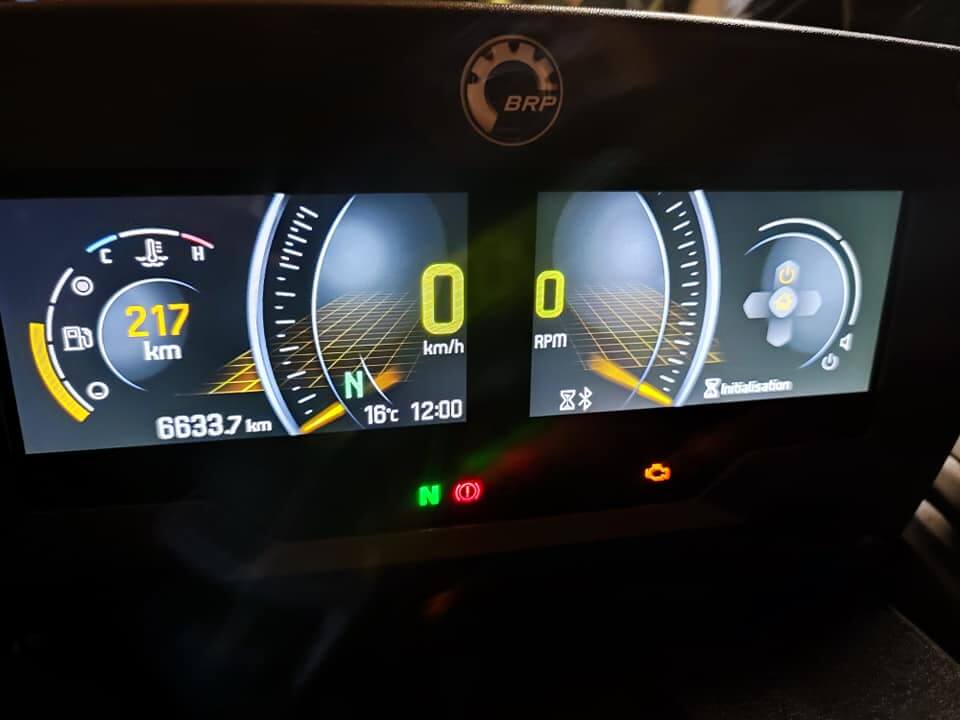
We’ve established that properly equipped Spyders like the F3 and RT can eclipse 100+ mph in ideal conditions. But what ultimately determines their real world speed capabilities?
Here are key factors that affect Spyder acceleration and top velocity:
Engine Power – More horsepower and torque equals faster acceleration, especially at higher RPMs. The Spyder F3 and RT’s muscular 115 hp 1330cc V-twin has the most grunt.
Weight – The heavier RT Spyder doesn’t accelerate as quickly as the lighter F3s. But both still produce 100+ mph speeds.
Rider Size – Solo riders will hit higher speeds than 2-up riding due to weight.
Transmission – The Spyder’s 6-speed semi-automatic shifts quicker than the Ryker CVT.
Conditions – Headwinds, inclines, wet roads reduce speeds significantly.
Speed Limiter Setting – Owners can set max speed cap from 60 mph to unlimited.
Aftermarket Modifications – Intake, exhaust, ECU tuning, etc. can add 10+ mph.
So while Spyders leave the factory capable of 100+ mph, their top speed depends greatly on model, conditions and custom tuning.
What’s it Like Piloting a Spyder Near Top Speed?
Hurtling down the highway at 100+ mph on three wheels is a unique rush! Riders report the Spyder feels planted and solid at high velocities – until hitting bumps or uneven pavement.
The Can-Am’s stability control and vehicle dynamics do an impressive job restricting body roll and cornering lean. Contributing tech includes:
- Dynamic Power Steering
- Traction Control System
- Anti-Lock Brakes
- Vehicle Stability System
Open road adrenaline junkies love cracking the throttle to see how fast their Spyder will accelerate. But due to the roadster’s higher center of gravity compared to motorcycles, riders need to be cautious of abrupt maneuvers at triple-digit speeds.
Braking or swerving hard could overwhelm the Spyder’s systems and traction, leading to wheel lift or worse. Gradually rolling off the throttle is best for making speed corrections. Plus tuning the preload and suspension for your weight helps handling.
In summary, here’s what test riders report about Can-Am Spyder stability near top speed:
- Impressively stable in a straight line
- Choppy when hitting uneven road sections
- Don’t brake or swerve aggressively
- Careful leaning into curves
For many enthusiasts, blasting down empty back roads and feeling the extreme wind blast just comes with the territory. But we always Stress riding safely within your and your vehicle’s limits.
Next let’s compare the Spyder’s velocity capabilities versus other powersports machines.
How Does Can-Am Spyder Top Speed Compare to Motorcycles?
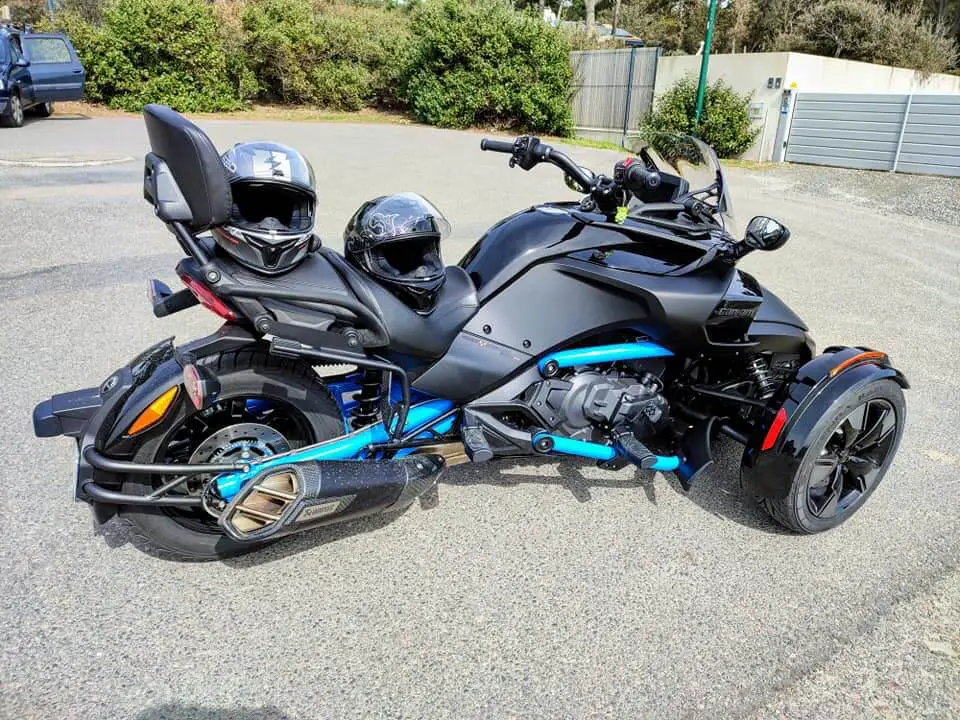
The Can-Am Spyder roadsters provide an intriguing middle ground between motorcycles and convertible sports cars regarding speed.
When comparing the Spyder to popular superbike, cruiser, and touring motorcycles on the market, a few key themes emerge:
- Most supersports bikes like the Suzuki Hayabusa (186 mph), Kawasaki Ninja ZX-14R (186 mph) and Aprilia RSV4 (189+ mph) outpace even the fastest stock Spyder significantly due to their lightweight, aerodynamic profiles and 200+ horsepower engines.
- The Spyder’s top velocity is more aligned with mid-size cruisers like the Harley-Davidson Road Glide (96 mph), Victory Vision (110 mph), Yamaha VMax (150+ mph) and Triumph Rocket III (145 mph). Its 1330cc V-twin provides muscle car acceleration.
- It exceeds most scooters and mini bikes which rarely surpass 100 mph with engines under 500cc.
- For torque and acceleration, the Can-Am Spyder is surprisingly quick off the line for its size, hitting 60 mph in just 4-5 seconds thanks to abundant low-end power from its Rotax engines. That matches smaller sportbikes.
So while elite superbikes and high-end cruisers will outpace the Spyder in raw speed, the Can-Am three-wheeler still provides exhilarating real-world velocity matched only by 1000cc+ motorcycles.
The Spyder was never intended to compete with the Hayabusa though! Its mission remains providing an exciting riding dynamic while prioritizing stability and ease of control over apex speeds.
And there’s always the allure of further performance modifications!
Do You Need a Motorcycle License to Pilot High-Speed Spyders?
Given its unique 3-wheel configuration, Can-Am Spyder riders may be able to bypass motorcycle licensing requirements in certain states depending on trike regulations.
But due to its 100+ mph capabilities, many states still classify the Spyder as a “motorcycle” requiring a motorcycle driver’s license or endorsement to operate legally.
So don’t assume you can accelerate a Spyder to extreme velocities without a motorcycle Class M license just because it has three wheels! Be sure to check your state’s vehicle codes. Riders under 18 may have restrictions too.
The Spyder’s stability systems certainly make it easier to control than a two-wheel motorcycle. But beginners must still respect learning proper countersteering, braking distances, cornering lines and other techniques before attempting 100+ mph speeds. Consider a motorcycle safety course.
And as thrilling as triple-digit straightaways might seem, we always encourage responsible riding speeds suited to public roads. Save track days for fully testing your and your vehicle’s limits safely.
How Can I Make My Spyder Go Even Faster? Performance Upgrades and Mods
While stock Spyder F3 and RT models already provide an exhilarating rush exceeding 100 mph, speed demons can unlock even higher velocities through:
Powertrain Tuning
Aftermarket ECU tuning companies offer reflashed ECU chips to optimize fuel mapping, ignition timing, throttle input, RPM limits and other parameters. Properly tuned ECU upgrades alone can add 7-12 mph on Spyders.
Intake and Exhaust
Opening up the engine’s ability to breathe pays big power dividends. Air intake kits, throttle bodies, less restrictive exhausts, muffler deletes and fuel programmers work wonders.
Gearing Changes
Adjusting the final drive and sprocket ratios either through gear swaps or an aftermarket belt conversion lowers RPMs at highway speeds, reducing vibration and strain for smoother high velocity cruising.
Nitrous Injection
For drag strip style bursts of speed, nitrous oxide injection kits can supply an extra 50+ horsepower…just be sure your drivetrain can handle it!
Not all modifications may be emissions compliant so check your local laws. And altering your vehicle’s speed capabilities significantly affects insurance requirements. So proceed carefully when modding for faster speeds.
Can-Am Spyder Top Speed Analysis and Takeaways
Through this deep dive exploring Can-Am Spyder acceleration, velocity capabilities, technology and real world reports across the F3, RT and Ryker models compared to other powersports vehicles, a few key themes emerge:
- Properly equipped Spyders like the F3 and RT Limited with their muscular 115 horsepower 1330cc V-twin engines absolutely provide enough grunt to exceed 110+ mph – matching mid-size touring motorcycles.
- Owners praise the stability control, ABS and other systems for keeping the Spyder planted during aggressive acceleration and high speed cruising, especially in a straight line.
- Riders looking to extract every last bit of speed may still choose purpose-built supersport or hyperbike motorcycles. But the Can-Am Spyder offers enticing convenience and comfort with muscle car power perfect for real world road trips.
- With the right performance upgrades and tune, you can add 10-15 mph to reach 125+ mph. But mind legal speed limits on public roads.
So while Handling remains its prime focus, Can-Am’s unique roadster still delivers triple-digit thrill rides putting drivers’ hair on fire across open highways in a way no car can match!
